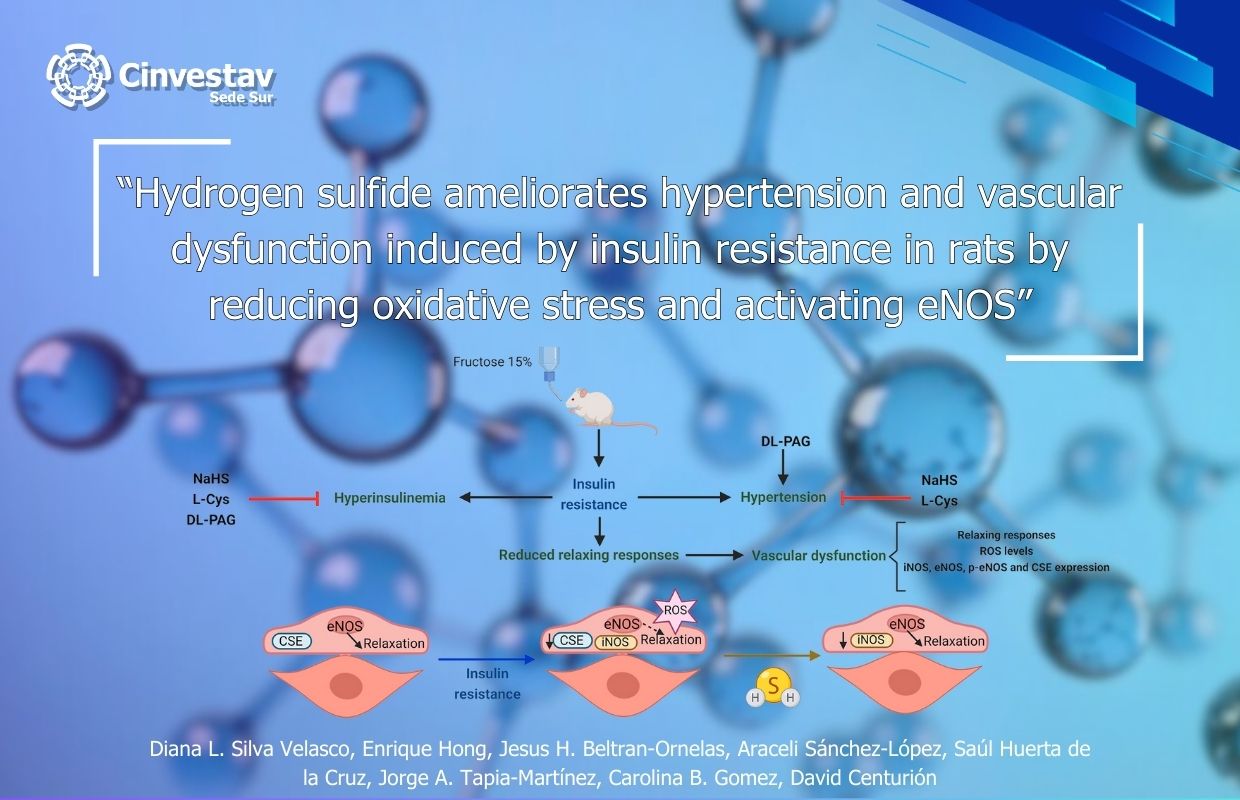David Centurión - Hydrogen sulfide ameliorates hypertension and vascular dysfunction induced by insulin resistance in rats by reducing oxidative stress and activating eNOS

Diciembre del 2023
Invitamos a leer el artículo: "Hydrogen sulfide ameliorates hypertension and vascular dysfunction induced by insulin resistance in rats by reducing oxidative stress and activating eNOS", en la que colaboró el Dr. David Centurión, Investigador de Cinvestav Sede Sur
Autores: Diana L. Silva Velasco, Enrique Hong, Jesus H. Beltran-Ornelas, Araceli Sánchez-López, Saúl Huerta de la Cruz, Jorge A. Tapia-Martínez, Carolina B. Gomez, David Centurión
Abstract: Hydrogen sulfide (H2S) is a gasotransmitter implied in metabolic diseases, insulin resistance, obesity, and type 2 Diabetes Mellitus. This study aimed to determine the effect of chronic administration of sodium hydrosulfide (NaHS; inorganic H2S donor), L-Cysteine (L-Cys; substrate of H2S producing enzymes) and DL-Propargylglycine (DL-PAG; cystathionine-gamma-lyase inhibitor) on the vascular dysfunction induced by insulin resistance in rat thoracic aorta. For this purpose, 72 animals were divided into two main sets that received: 1) tap water (control group; n = 12); and 2) fructose 15% w/v in drinking water [insulin resistance group (IR); n = 60] for 20 weeks. After 16 weeks, the group 2 was divided into five subgroups (n = 12 each), which received daily i. p. injections during 4 weeks of: 1) non-treatment (control); 2) vehicle (phosphate buffer saline; PBS, 1 ml/kg); 3) NaHS (5.6 mg/kg); 4) L-Cys (300 mg/kg); and (5) DL-PAG (10 mg/kg). Hemodynamic variables, metabolic variables, vascular function, ROS levels and the expression of p-eNOS and eNOS were determined. IR induced: 1) hyperinsulinemia; 2) increased HOMA-index; 3) decreased Matsuda index; 4) hypertension, vascular dysfunction, increased ROS levels; 5) increased iNOS, and 6) decreased CSE, p-eNOS and eNOS expression. Furthermore, IR did not affect contractile responses to norepinephrine. Interestingly, NaHS and L-Cys treatment, reversed IR-induced impairments and DL-PAG treatment decreased and increased the HOMA and Matsuda index, respectively. Taken together, these results suggest that NaHS and L-Cys decrease the metabolic and vascular alterations induced by insulin resistance by reducing oxidative stress and activating eNOS. Thus, hydrogen sulfide may have a therapeutic application.
Keywords: Hydrogen sulfide, Insulin resistance, Vascular dysfunction, Vasorelaxation, Vasoconstriction